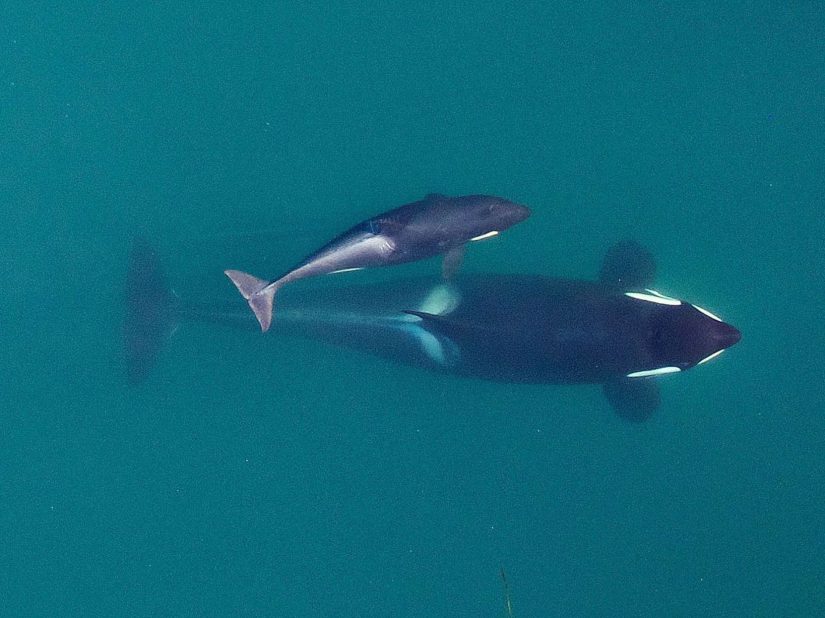Short Term Solutions to Long Term Problems: Southern Resident Killer Whales and Salmon Hatcheries
Killer whales (Orcinus orca) are a keystone species within Salish Sea ecosystems, maintaining the region’s biodiversity and serving as an indicator for overall ocean health. In Puget Sound, Washington, Southern Resident killer whales (SRKW) are an iconic species readily recognized by locals and visitors alike. They serve as an ecotourism draw to the region and are widely beloved by the local community. Southern Resident killer whales are integrated into the history and culture of many Salish Sea Tribes, who serve as an essential voice in policy decisions. Comprehensive policies for SRKW recovery are needed to address the wide array of challenges to increasing population levels. With SRKW populations at such critical levels, actionable steps are necessary to yield maximum short-term benefits. Since 2019, the release of hatchery-raised Chinook salmon to increase prey availability for SRKWs has become widespread in Washington State. A recent study concludes that the practice may have increased prey availability by as much as 3-percent.
“With SRKW populations at such critical levels, actionable steps are necessary to yield maximum short-term benefits.”
When census recordings of SRKW populations began in 1971, there were 71 individuals. Whale capture for marine parks caused a drastic decline from 1965 to 1975. Populations have since fluctuated to a peak population level of 97 whales in 1996, but have since declined to critical levels (currently 73 individuals). SRKW were listed as endangered under the Endangered Species Act in 2005, which led to the inland waters of Washington State being designated as critical habitat for SRKW survival and population recovery by NOAA Fisheries in 2006. An essential factor of this designation is that the habitat has enough prey to support individual growth, reproduction, and development.
The preferred prey for SRKWs are Chinook salmon, which are crucial for the health and stability of Puget Sound ecosystems by providing food and nutrients to many species. Chinook are a keystone species that have been listed as threatened under the Endangered Species Act since 1999. The recovery of Puget Sound Chinook salmon is entwined with the ongoing SRKW recovery efforts. Chinook are the largest of the Pacific salmon species, and provide high caloric value. SRKWs consume only fish, with a strong preference for Chinook salmon, and the availability of this resource is vital to healthy Southern Resident populations. Puget Sound Chinook salmon populations are in crisis due to habitat degradation and historical overharvest. The recovery efforts for Southern Residents are contingent on recovery efforts for Chinook salmon.

Policy targeting the conservation and recovery of Southern Resident killer whales has been evolving for decades at the state and federal policy levels. Policy strategies aimed at mitigating key threats to Southern Resident populations began at the State level in 1971, with the legislature passing a law to regulate the capture of killer whales. The Southern Resident Killer Whale Task Force, established by an executive order of Governor Jay Inslee in 2018, is directed to identify immediate and long-term actions toward benefiting SRKWs. Task Force recommendations for increasing SRKW populations within the next decade include increasing Chinook salmon abundance, decreasing risk from vessel disturbance, and decreasing environmental pollutants. The importance of Chinook salmon to the diets of SRKWs makes increasing their population levels an essential step to recovering SRKW numbers.
Many strategies have been developed to increase prey availability by focusing on protecting and improving salmon habitat through incentives for landowner action, stakeholder discussions advocating for breaching the lower Snake River dams, and shoreline restoration. Another approach aimed at short-term SRKW population benefit is a collaborative Tribal, State, and Federal directive to allocate funds for hatcheries to supplement prey availability by increasing Chinook salmon production. This plan directs funds to maximize the Department of Fish and Wildlife hatcheries’ capacity to increase smolt production and adult returns of salmon.
Salmon hatcheries in Oregon and Washington began increasing juvenile Chinook salmon production in 2019 to provide more prey for SRKW. The goal of this strategy is to provide critically needed short-term benefits to whale populations while also working on long-term recovery goals, such as ecosystem restoration. In response to the Task Force recommendations, the State of Washington Department of Fish and Wildlife proposed the strategic release of 30 million additional smolts into Puget Sound to produce 384,000 additional adult salmon for SRKWs. Locations for smolt release have been identified to reduce the chance of breeding contact between wild and hatchery salmon. Candidate hatcheries were identified that would have the infrastructure to prevent returning salmon from reaching wild population spawning grounds.
NOAA Fisheries has also funded hatcheries to produce more salmon for the Southern Resident killer whales. Federal and Washington State funding have gone into the hatchery program, with 35 hatcheries in Oregon and Washington contributing salmon to the NOAA Prey Increase Program. NOAA contends the early results of this program are promising and warrant further funding, but this program has prompted litigation from critics. Two organizations advocating for the protection of wild salmon stocks want the hatchery programs to be declared illegal under the Endangered Species Act. Already, the NOAA Fisheries Prey Increase Program for Southern Resident Killer Whale has gone through a court review process in response to court orders resulting from a case in Alaska in 2023. In Wild Fish Conservancy vs. Quan, the court concluded that NOAA “did not adequately evaluate the current releases of hatchery fish as prey (food) for SRKWs at a larger, more programmatic scale.” This determination prompted a Programmatic Environmental Impact Statement (PEIS) for the prey increase program. This statements included careful evaluation of three alternatives to increasing hatchery production of Chinook salmon to supplement SRKW diets as well as public comments periods on the program.
The findings indicate that the short-term benefits of using hatchery-raised Chinook Salmon—specifically to increase food availability for Southern Resident killer whales within the last five years—were determined to outweigh the potential risks to wild Chinook populations. Primarily, experts are concerned that hatchery-raised stocks could reduce fitness and survival rates of wild salmon populations through genetic mixing, or interbreeding. The push for hatchery production is largely driven by evidence showing that SRKW urgently require a greater abundance of prey in the near term, and hatchery fish offer the fastest way to meet this critical need. Hatchery efforts would need to produce 26 million fish annually, at an estimated cost of 12 million to increase production at existing hatcheries.
 An aerial view of J-50, an adult SRKW swimming with their calf. Photo courtesy of NOAA Fisheries, shared under Public Domain.
An aerial view of J-50, an adult SRKW swimming with their calf. Photo courtesy of NOAA Fisheries, shared under Public Domain.
The hatchery prey increase program was identified by the PEIS as the environmentally preferable alternative. The factors in this determination include the conclusion that the hatchery alternative will have a low impact on wild populations of Chinook salmon and will not impact Tribal resources. Increasing prey abundance and availability in the short term is critical to benefit Southern Resident killer whales. Thus, hatchery production is the preferred alternative with benefits for orcas outweighing other options with less impact on wild Chinook salmon. Efforts to mitigate environmental impacts from hatchery-raised salmon are required in Tribal, State, and Federal hatchery programs mainly through fish stock monitoring and evaluation measures.
The recovery of Southern Resident killer whales depends on the availability and abundance of prey, particularly Chinook salmon. While long-term strategies such as habitat restoration and dam removal are critical to the future health of wild salmon populations, they require years—if not decades—to yield measurable results. In the meantime, SRKW face an urgent need for increased food sources to support their survival and reproduction. Prey supplementation through hatchery-raised Chinook offers a timely and effective short-term solution, endorsed by Tribal, State and Federal agencies as the environmentally preferable alternative. Although concerns remain about the potential impacts on wild salmon populations, current mitigation measures and ongoing monitoring efforts aim to minimize those risks. Population recovery for Southern Resident killer whales requires both immediate action and sustained, ecosystem-wide commitment through comprehensive policies.